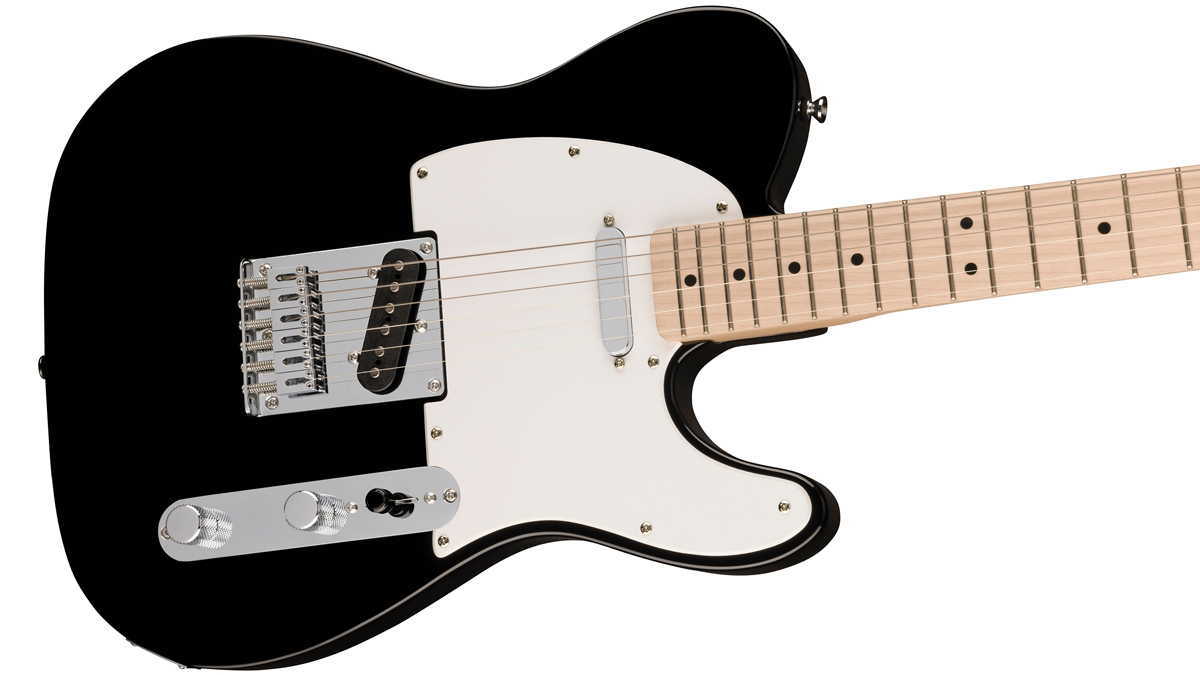Guitar World Verdict
Squier serves up an authentic Telecaster experience for under 200 bucks. It's playable, sounds great, and ideal for beginners.
Pros
- +
Entry-level pricing, classic Fender design.
- +
Easy to play.
- +
Responsive tone control.
- +
Lightweight.
Cons
- -
Bridge pickup might be a little bright for some tastes.
You can trust Guitar World
In April 2023, Fender announced the Squier Sonic range – a collection of Stratocasters, Telecasters, Mustangs and a handful of bass guitars that weighed in under $/£200. As a successor to the cult popular Bullet range, though, the Sonics had a lot to live up to.
Squier Bullet guitars were widely regarded as some of the best affordable guitars money could by, and represented both a solid choice for first-time guitarists, and a well-priced platform for more seasoned strummers to either obtain some Fender feel or put their modding abilities to the test without worrying about expensive overheads.
So, like we say, a lot to live up to, because while the Bullets were irresistibly cheap, their individual performances vastly outweighed their humble price tags. Mike Rutherford of Genesis, for example, took the Bullet Strat on an arena tour.
Fender has sought to continue the Bullet’s legacy with a new generation of electrics, which comprises all the classic Squier shapes you’d expect, as well as some new faces in the form of the Esquire, and a sole humbucker-equipped Stratocaster.
We put four Squier Sonic models through their paces to find out whether Fender’s most affordable entry-level guitar family is actually any good. Spoiler alert: it is. But today, we are going to look at the Telecaster, which may or may not be the pick of the litter.

No Squier range is complete without a Telecaster, and here the quota has been filled by the poplar-bodied Sonic iteration of Fender’s single-cut. Though available in an assortment of finishes and a choice of fretboard materials, our example takes on a decidedly ’50s flavor thanks to its no-nonsense Black finish and maple fingerboard.
It’s a similar story to the Sonic Strat – an authentic Tele experience with some adjustments to wrestle that price down to the sub-$/£200 mark. Weighing in with Fender’s standard 25.5” scale length, with a 9.5” radius and 21-fret maple fingerboard, the lighter-than-usual guitar is just as delightful to navigate as the Strat, with the C-shape satin urethane maple neck lending itself to some especially slick fretting transitions.
All the latest guitar news, interviews, lessons, reviews, deals and more, direct to your inbox!

While the pickups may be a tad on the glassy side for some, this particular, er, sonic characteristic is arguably better implemented here than in the Strat HT’s circuit – and the prominent highs lend themselves to some authentic Tele snaps.
And, of course, the highs of both ceramic single coils can be tamed through the responsive tone knob, which works alongside a master volume parameter and a three-way toggle switch. While the neck coil excelled in our Jason Isbell-inspired country experiments, the bridge pickup performed admirably when asked to deal out some more high-gain riffs (albeit with added twang).

A more modern six-saddle bridge sees the guitar further depart from its ’50s vibe, but this appointment will merely make the whole package easier to maintain, set up and play – especially for beginners – than if it were to pack a three-saddle alternative.
Specs
- PRICE: $199 / £159
- BODY: Poplar
- NECK: Maple
- NECK PROFILE: “C” shape
- FINGERBOARD RADIUS: 9.5”
- FRETS: Narrow Tall
- PICKUPS: 2 x Ceramic Single-Coil
- CONTROLS: Master Volume, Master Tone, Three-Position Blade Switch
- FINISH: Black
- CONTACT: Fender

Matt is the GuitarWorld.com News Editor, and has been writing and editing for the site for five years. He has a Masters in the guitar, a degree in history, and has spent the last 19 years playing everything from blues and jazz to indie and pop. During his GW career, he’s interviewed Peter Frampton, Zakk Wylde, Tosin Abasi, Matteo Mancuso and more, and has profiled the CEOs of Guitar Center and Fender.
When he’s not combining his passion for writing and music during his day job, Matt performs with indie rock duo Esme Emerson, and has previously opened for the likes of Ed Sheeran, Keane, Japanese House and Good Neighbours.

